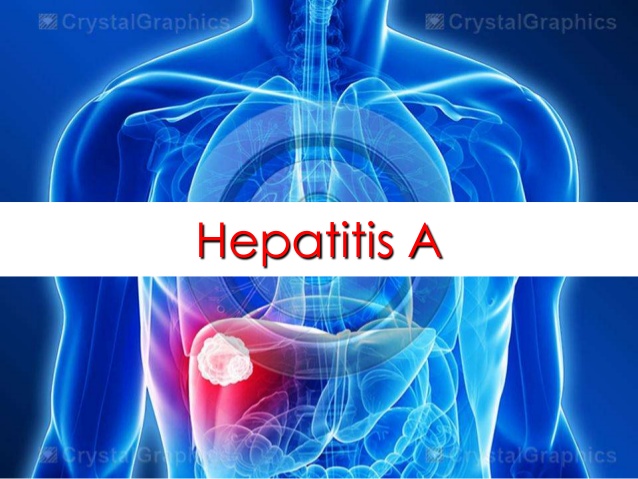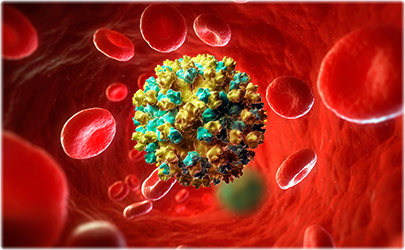All About Hepatitis

HEPATITIS; AN OVERVIEW
 The liver is made up of millions of cells. Each of the cells works in concert to produce protein and other products that enable the body to function. Hepatitis literally means inflammation of the liver, in particular, the liver cells. There are many causes of hepatitis including drugs, infections, antibodies and genetic disorders.
The liver is made up of millions of cells. Each of the cells works in concert to produce protein and other products that enable the body to function. Hepatitis literally means inflammation of the liver, in particular, the liver cells. There are many causes of hepatitis including drugs, infections, antibodies and genetic disorders.
The most common viruses to cause viral hepatitis are lettered as A, B, C, D, E and G. All of these viruses cause acute (short term) hepatitis, while only a few viruses tend to result in chronic (long term) hepatitis. Acute hepatitis can result in immediate liver failure, chronic infection or complete recovery without any lasting effect. Chronic hepatitis is the result of acute hepatitis that persists in the person’s body and can result in liver failure, cancer or remain completely symptomless.
The viruses named B, C, and D may lead to chronic hepatitis, in which the infection is prolonged, sometimes lifelong.
HEPATITIS A
 Hepatitis A, a liver disease caused by hepatitis A virus (HAV), is highly contagious. Historically, it was called infectious hepatitis. HAV attacks the liver, but unlike hepatitis B and C, it does not cause chronic infection, liver cancer or chronic liver failure.
Hepatitis A, a liver disease caused by hepatitis A virus (HAV), is highly contagious. Historically, it was called infectious hepatitis. HAV attacks the liver, but unlike hepatitis B and C, it does not cause chronic infection, liver cancer or chronic liver failure.
-
Symptoms:
The infection may go unnoticed especially in children under 6 years old. In older children or adults, most develop an illness about a month after the infection. In those who develop symptomatic hepatitis A, flu-like symptoms, such as fever, chills, and a general feeling of weakness, may occur. Other symptoms may include anorexia, nausea, jaundice (yellowing of the eyes and skin), dark urine, light-colored stools, abdominal pain, and fatigue. Symptoms usually last less than 2 months; a few persons are ill for several months and may require hospitalization. The average incubation period for hepatitis A is 28 days (range: 15-50 days).
-
Diagnosis:
A blood test (IgM anti-HAV) is needed to diagnose hepatitis A. Antibody to IgG infers immunity to the hepatitis A virus.
-
Cause:
Hepatitis A is found in the stool of persons with hepatitis A. The virus is usually spread through person-to-person contact or through contaminated food and water. Rarely, it spreads through contact with infected blood.
-
Prevention and Vaccination:
Avoid tap water when traveling internationally and practice good hygiene and sanitation.
The hepatitis A vaccination is available and should be used in all individuals. Any individual at risk: health care workers, travelers, day care workers, parents with children in day care, sexually active individuals, school teachers and food handlers, etc. should receive the hepatitis A vaccine.
HEPATITIS D
Hepatitis delta virus (HDV) is spread through contact with infected blood. This disease occurs only in people who are already infected with hepatitis B. People at risk include anyone infected with hepatitis B. Injection drug users who have hepatitis B has the highest risk. People who have hepatitis B are also at risk if they have sex with a person infected with hepatitis D or if they live with an infected person.
-
Prevention:
Vaccination against hepatitis B for those not already infected; also, avoiding exposure to infected blood, contaminated needles, and an infected person’s personal items (toothbrush, razor, nail clippers).
-
Treatment:
Drug treatment with alpha interferon.
HEPATITIS E
Hepatitis E (HEV) is spread through food or water contaminated by feces from an infected person. This disease is uncommon in the United States. People at risk include international travelers; people living in areas where hepatitis E outbreaks are common; and people who live or have sex with an infected person. It is most common in pregnant women.
-
Prevention:
There is no vaccine for hepatitis E. The only way to prevent the disease is to reduce the risk of exposure to the virus. This means avoiding tap water when traveling internationally and practicing good hygiene and sanitation.
-
Treatment:
Hepatitis E usually resolves on its own over several weeks to months.
HEPATITIS B
Hepatitis B is a severe form of hepatitis caused by a virus referred to as HBV. It is contagious and is spread by four major routes of transmission:
- Perinatal – An infected mother passes the virus to her child during birth. The risk of this type of exposure has been reduced 95 percent by the induction of hepatitis B vaccination and immunoglobulin therapy at the time of delivery.
- Household contacts – The passing of the virus from person to person within the same household. This is usually spread via infected saliva, blood or other body fluids through scratches or other lesions.
- Blood – The penetration of the skin by an object infected with the hepatitis B virus. The most common source of infection is HBV infected blood transmitted via intravenous drug abuse, tattooing, ear piercing, accidental needle stick injuries etc.
- Sexual – HBV is spread through having sex with an infected person.
Hepatitis B is not spread through food or water or by casual contact. Persons at risk for HBV infection might also be at risk for infection with hepatitis C virus or HIV.
-
Symptoms:
Signs and symptoms are less common in children than adults and include jaundice, fatigue, abdominal pain, loss of appetite, nausea, vomiting and joint pain.
The hepatitis B vaccine has been available since 1982 and is the best protection against HBV. Three doses are commonly needed for complete protection.
HEPATITIS C
Hepatitis C is a liver disease caused by the hepatitis C virus (HCV). There are at least 6 major genotypes and more than 50 subtypes of HCV. The different genotypes have different geographic distributions. Genotypes 1a and 1b are the most common in North America and Europe. Genotypes 2 and 3 are present in only 10 to 20 percent of patients. There is little difference in the severity of disease or outcome of patients infected with different genotypes. However, patients with genotypes 2 and 3 are more likely to respond to alpha interferon treatment.
Around the globe, approximately 170 million people infected chronically from HCV and 3 – 4 million new cases are seen every year.
TRANSMISSION OF VIRAL HEPATITIS
Other viruses, yet to be discovered, may also cause hepatitis and are called non A-G hepatitis. Hepatitis can result from toxins, drugs as well as many other viruses and infections.
Toxins can lead to a deterioration of the liver cells and may be caused by chemicals, alcohol, drugs, or industrial compounds. Alcohol abuse is a common cause of toxic liver damage.
-
Symptoms:
Symptoms of viral hepatitis include jaundice (yellowing of the skin and eyes), fatigue, abdominal pain, loss of appetite, nausea, diarrhea, and vomiting. Some people do not have symptoms until the damage to the liver is advanced. With this result we suggest to check this page https://loans-payday.online/payday-loans-no-credit-check/ for emergency medical loan.








